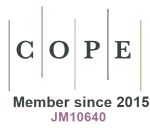Downloads
How to Cite
Ma, B., Wesolowski, G., Luo, B., Lifsted, T., Wessner, K., Adamson, G., Glantschnig, H., & Lubbers, L. S. (2019). Suppression of cathepsin K biomarker in synovial fluid as a free-drug–driven process. Journal of Circulating Biomarkers, 8(1). https://doi.org/10.33393/jcb.2019.2097
Issue
Section
Original research article
Statistics
- Abstract views - 840 times
- PDF downloads - 611 times
Sign up
banners150
Most popular articles in the last 30 days
-
187
-
167
-
163
-
162
-
106









